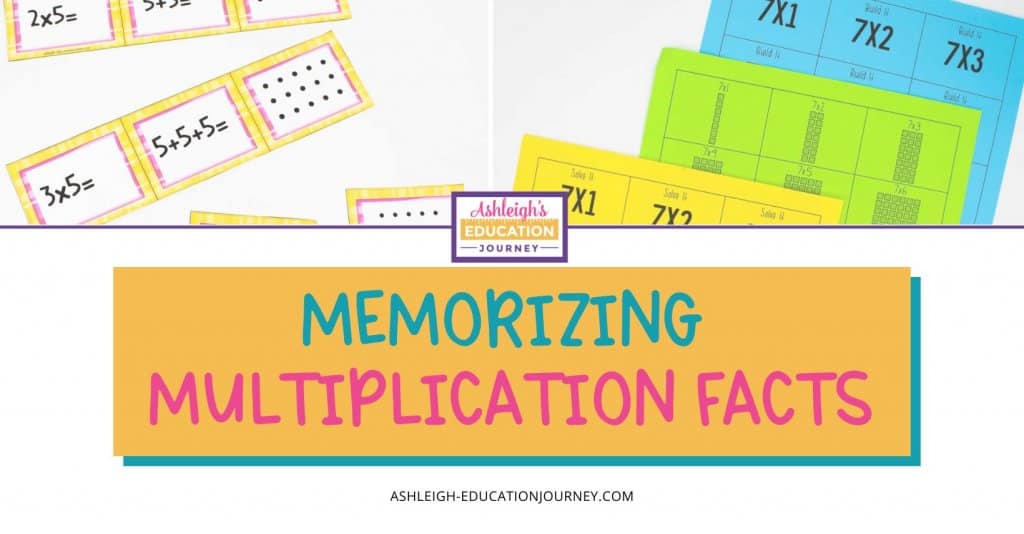
Teachers agree that memorizing multiplication facts is such a challenging part of elementary school. In fact, I surveyed more than 20,000 teachers about their biggest challenge in math instruction. The most overwhelming response was that their students don’t know their math facts. This issue is a not a new trend. Math facts, especially memorizing multiplication facts, has been a hot topic since I was in elementary school. I still remember taking “mad minute” tests as a child where we had to solve a certain number of problems in one minute.
We now know that teaching multiplication strategies through games and hands-on activities is more beneficial that repetitive drill. When using games to encourage memorizing multiplication facts, it’s essential that the games and activities are intentional and follow a specific framework. To help me stay focused, I’ve created a series of systematic lessons and activities students can use to memorize and understand multiplication facts. You can find those lessons in my TpT shop.
In this post:
- Multiple Representations
- Tiered Flashcards
- Multiplication Strategies Booklet
- Word Problems
- Timed Test
Multiple Representations
The first step in memorizing multiplication facts is for students is to SEE the different representations of the math facts. For example in this multiplication activity, students sort arrays, repeated addition number sentences, and equations. This allows students to begin understanding what the multiplication means.
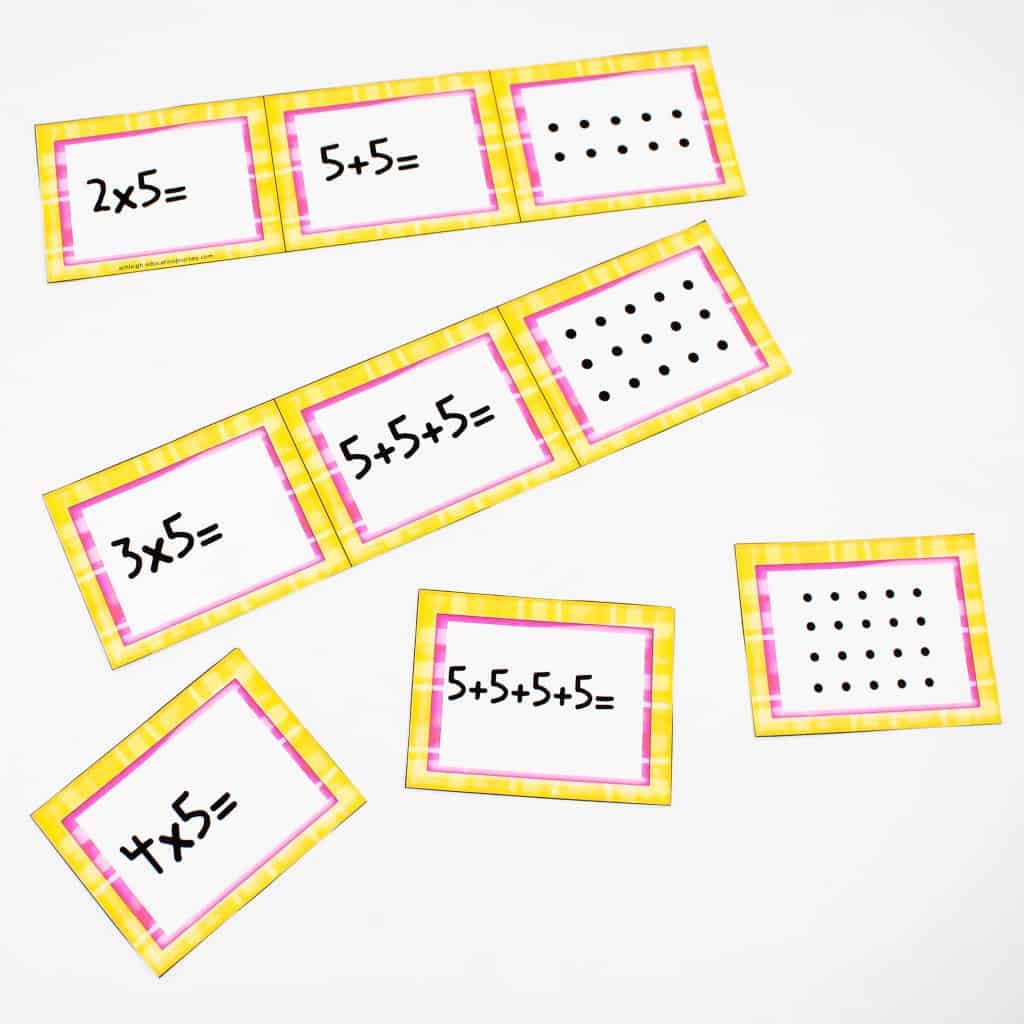
Memorizing Multiplication Facts – Tiered Flashcards
After students sort multiplication representations, they should then progress to leveled flashcards. This is another helpful step in memorizing multiplication facts. At this point, students aren’t ready for traditional abstract flashcard practice. Instead, students should begin with the set of Build-It flashcards. In this set, students actually build each multiplication problem. They could use counters or snap cubes for this activity. After students have concrete experience, they can move to pictorial models of each multiplication problem as a flashcard. This pictorial model helps bridge concrete and abstract thinking. In the third set of flashcards, students can answer the multiplication problem using an abstract strategy.
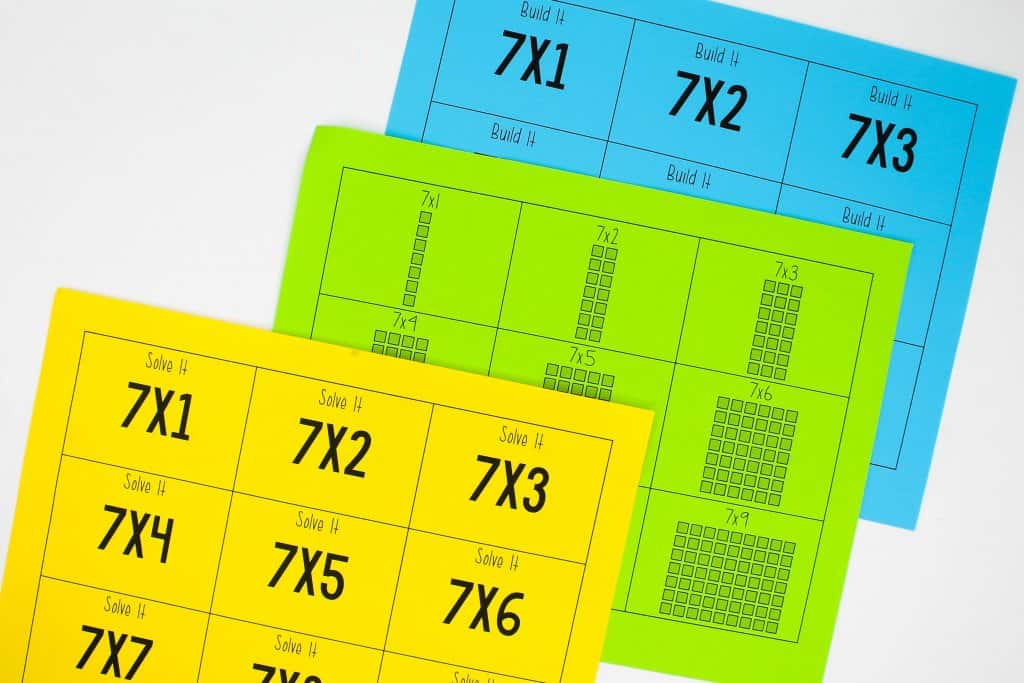
Multiplication Strategies Booklet
When memorizing multiplication facts, students should also have the opportunity to WRITE about the strategies they use to solve multiplication problems. This allows students to internalize their learning. For each set of facts, students describe a strategy they could use to solve a multiplication problem. If I have a student who has already worked their way to automaticity in that set of problems, I ask students to explain to a friend how to use a strategy. Students also represent problems using arrays, repeated addition, grouping models, and a number line.
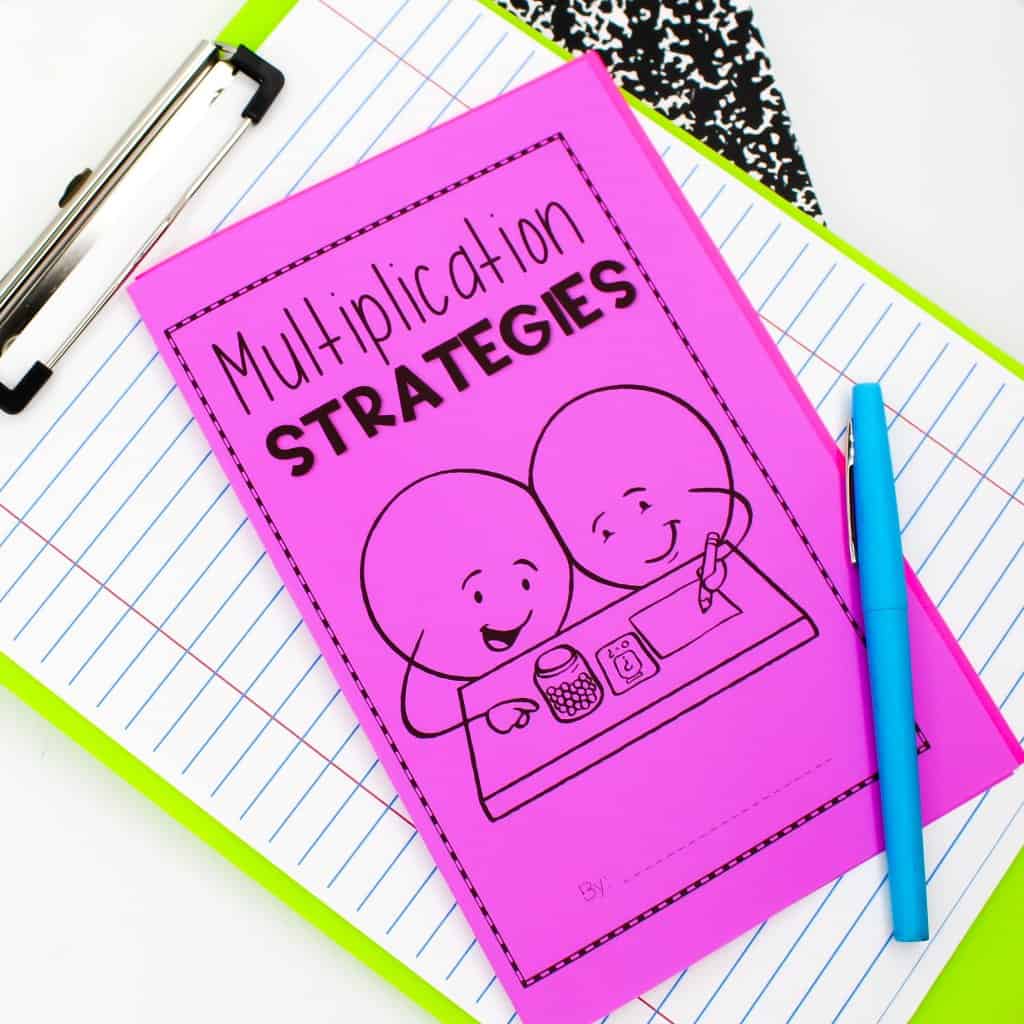
Memorizing Multiplication Facts – Word Problems
It’s so important to teach memorizing multiplication facts in context, so for each set of facts that students work though, be sure to have them solve AND write multiplication word problems. This is another reason it’s so important to have students write about the strategies they use. For example, if students are working on their four facts they will solve two problems where four is a factor and write two problems where four is a factor.
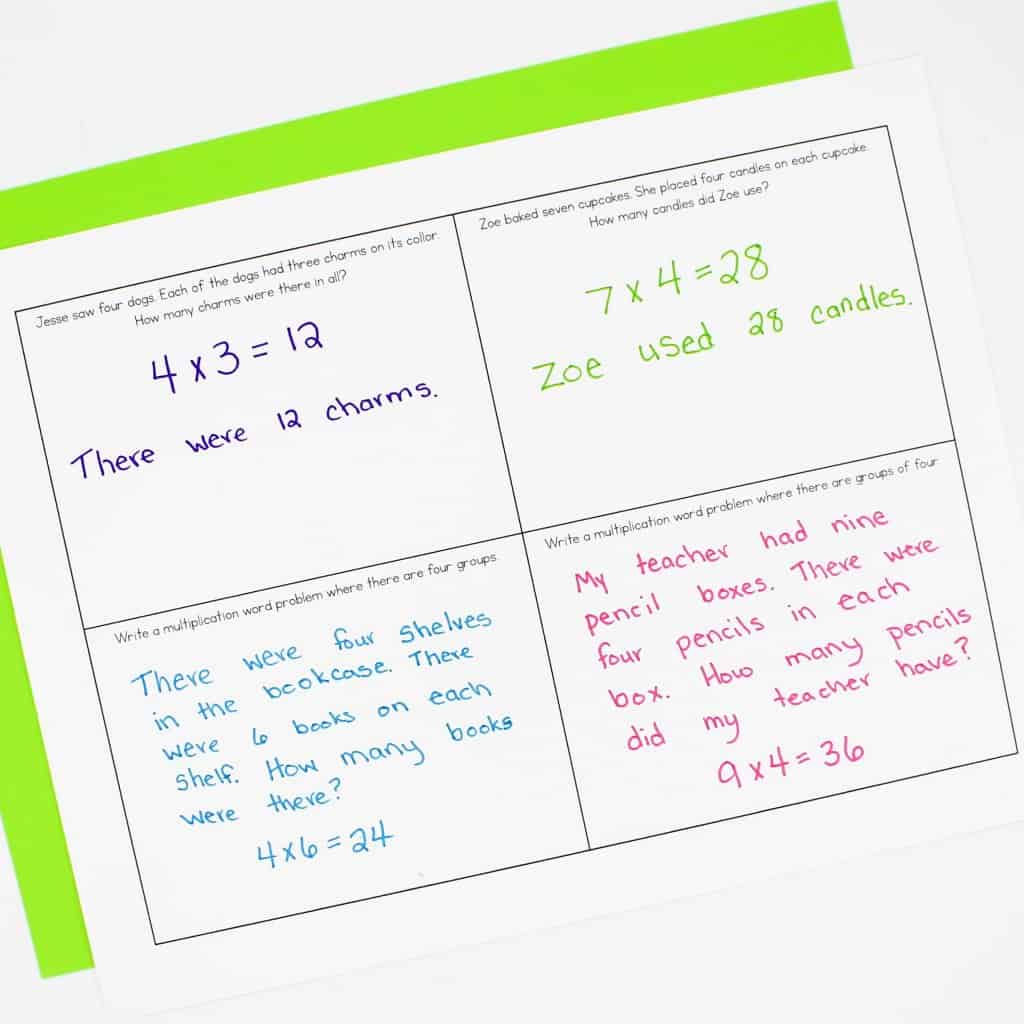
Timed Test
While timed tests can be misused, they can also play a positive role in memorizing multiplication facts. Rather than giving students a certain amount of problems to solve in a set amount of time, I have students solve the entire set of multiplication problems and time how long it took to complete all of the problems. This alleviates the extra stress that comes with a timed test. I also have students graph how long it took to complete the test to encourage metacognition and self-reflection. I staple multiple versions of the set of facts to the timed test graphing sheet to give students four different opportunities to take the test.
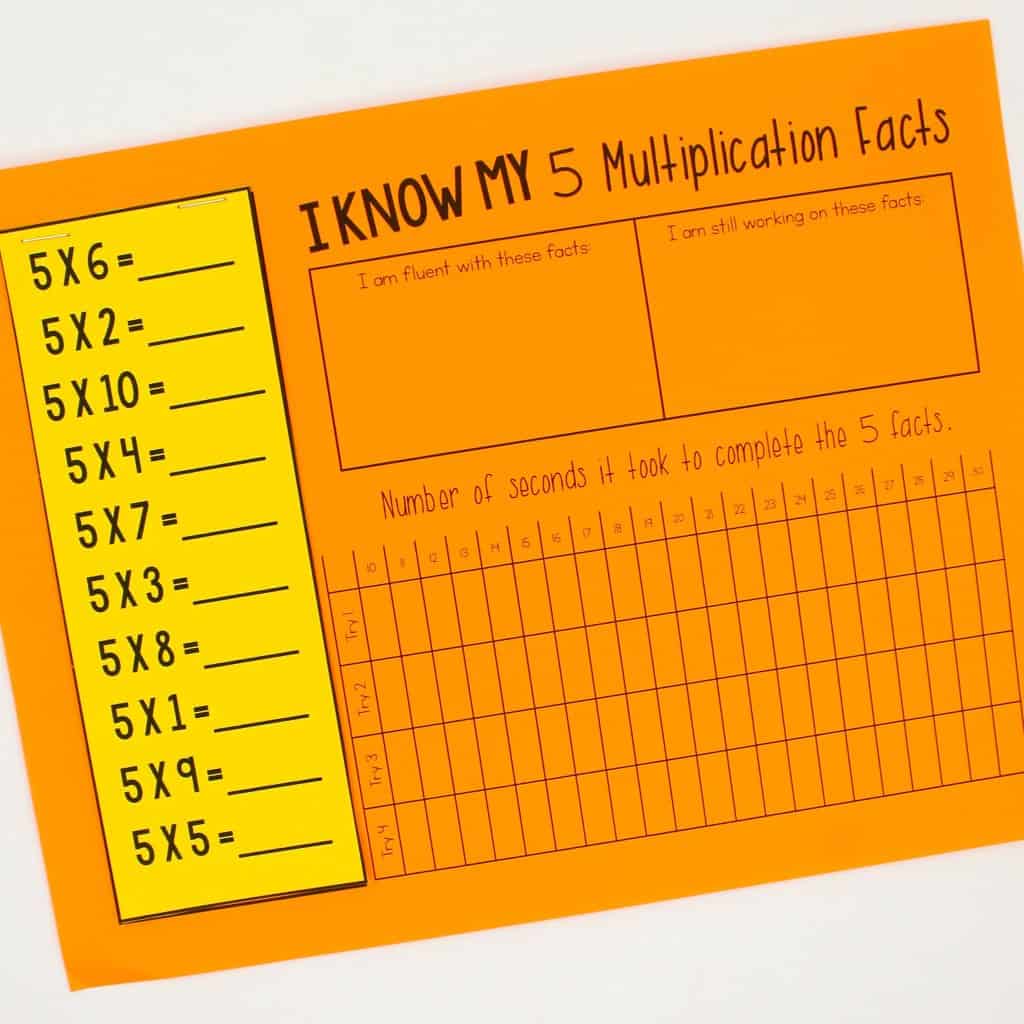
To help keep my students organized with each of these activities, I give them color coded bookmarks. The bookmarks show what is expected from students each week. The activities are listed in the order in which they should be completed. As students complete an activity, they check it off on the day it was completed. You can see these activities in my TpT shop!
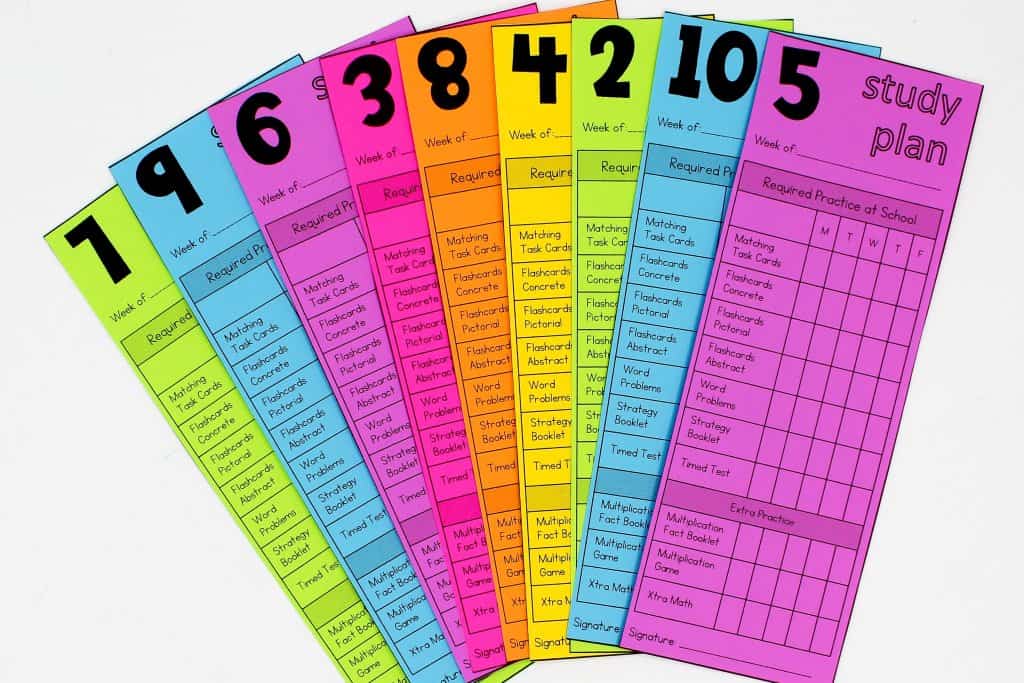
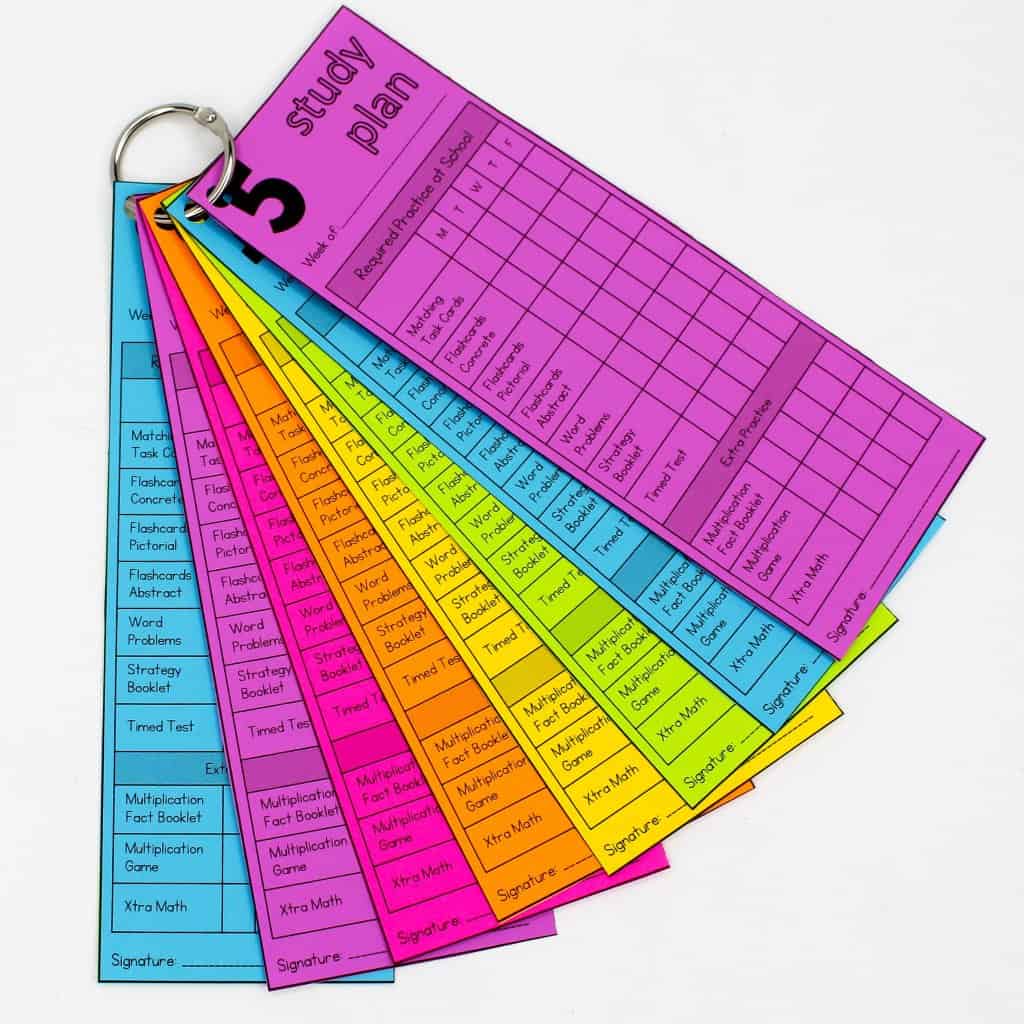
I did add a few extras at the bottom of each bookmark, because these are things we do weekly, if not daily. I send home a Weekly Multiplication Game with students every Monday. These memorizing multiplication fact games only require dice or a set of playing cards, which I provide if students don’t have at home. This isn’t an assignment to be graded. Instead, it’s an opportunity for fun practice.
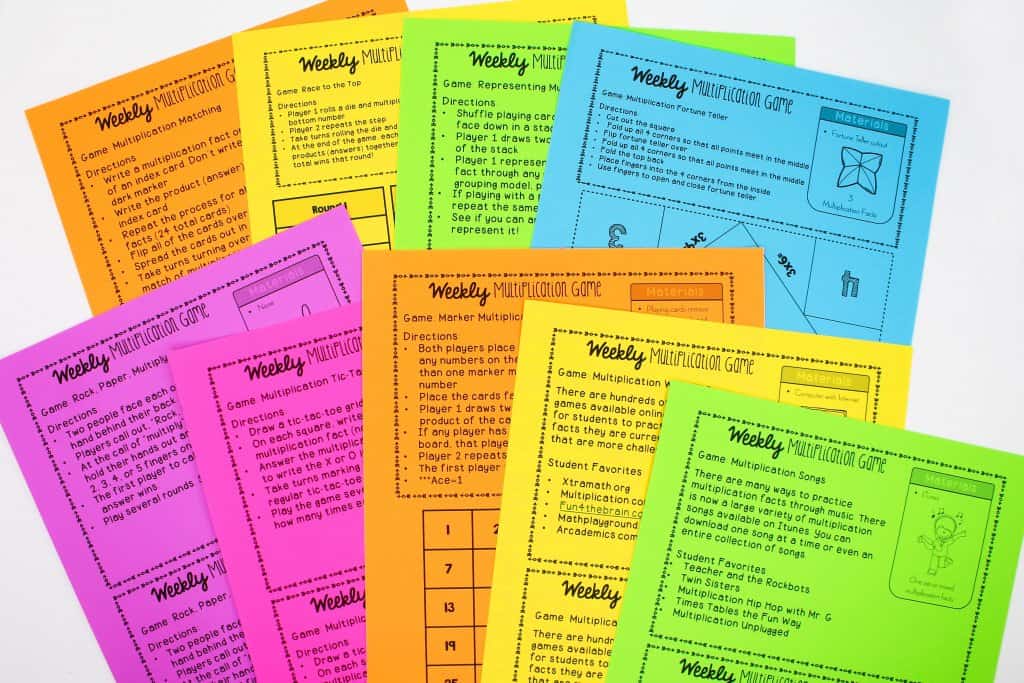
I also give students who need additional support a Multiplication Fact Booklet that will take them through each multiplication problem for that set of multiplication facts. This gives students the extra support they may need and it solidifies understanding.
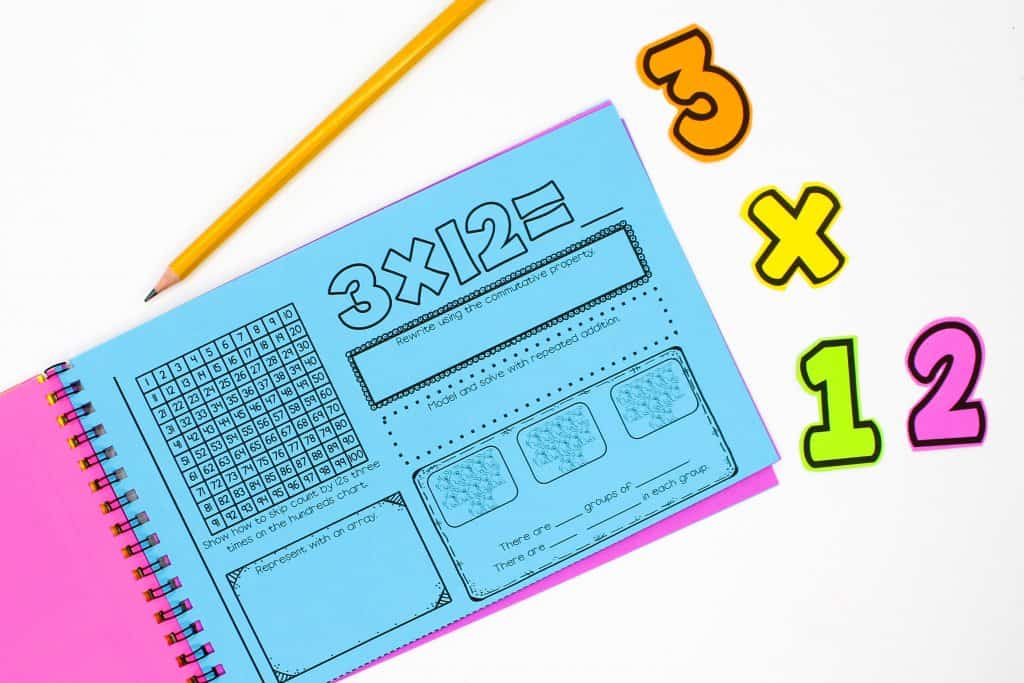
Xtra Math is another great practice tool. However, it’s important to keep in mind that it is a tool. Nothing replaces the conceptual activities where students actually work with multiplication facts.
You can read additional posts on memorizing multiplication facts here and here. I’d love to hear about what you’ve tried that has been successful!

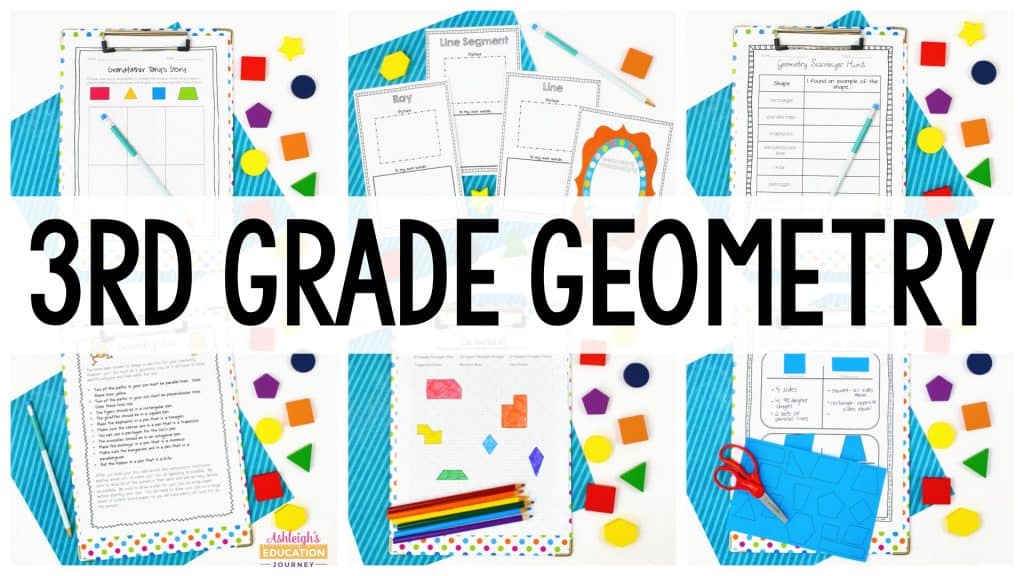
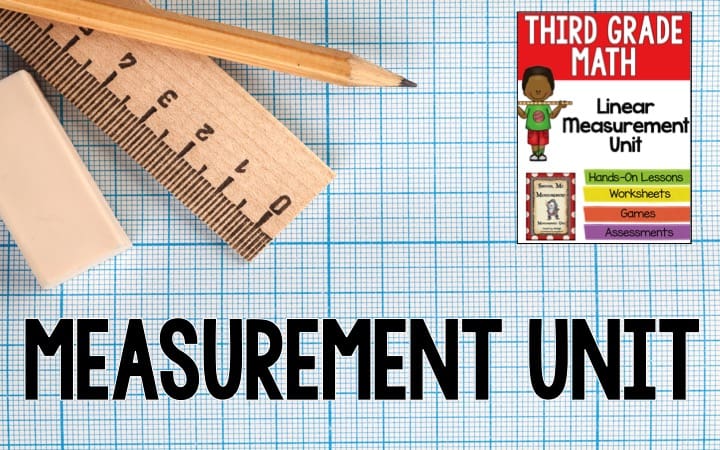
I love what you said about multiplication. I teach first and second and was wondering if you have the same for addition and subtraction.
I don’t have anything at this time.
I would live the addition set for my girls at home if you make one!
Ashleigh,
These resources for multiplication practice look great. For some reason, I am unable to access your TpT store. The link isn’t working for me. The links in the text are also not functioning.
Can you help?
Thank you!
I have no idea why that happened. Here’s the link! https://www.teacherspayteachers.com/Product/Multiplication-Fact-Toolkit-Strategy-Practice-4553772
I have no idea why that happened. Here’s a link! https://www.teacherspayteachers.com/Product/Multiplication-Fact-Toolkit-Strategy-Practice-4553772
Do you have the tiered flash cards with arrays for purchase somewhere?
Hi there! They a part of my multiplication resource. I don’t have them as an individual resource.
Pingback: 20 Sequencing Activities for Middle School Inclusion Teachers - Teaching Expertise